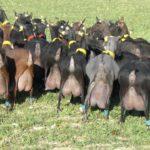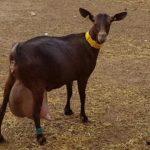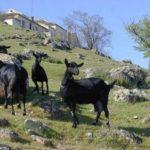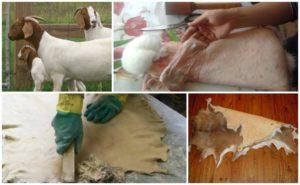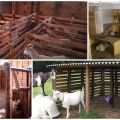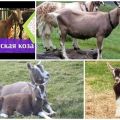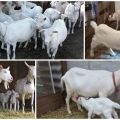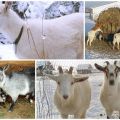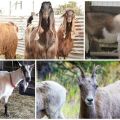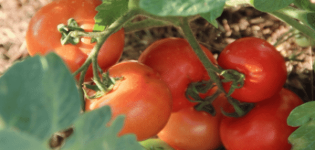Description and characteristics of Spanish goats of the Murciano Granadina breed, care
Dairy goats in Russia are represented by different breeds. Some of them are traditionally grown in the country, for example, Zaanen, others are just emerging. Consider the description and characteristics of goats Mursiano Granadina - Spanish breed, its advantages and disadvantages, the technology of care and maintenance of these animals, breeding rules and treatment of possible diseases.
Description of the species and its characteristics
The breed was developed in the southeast of Spain. The Spanish goats Murciano Granadina are of the dairy type. The color is black with red, without white hairs. Animals are medium in size, with a triangular head, with straight ears, goats with a beard. The neck is thin, elongated body, wide chest and voluminous belly, convex sacrum. The tail is short and straight. The legs are of medium height, strong, slightly crooked, as they cover the voluminous udder. The teats on the udder are directed forward and outward, the skin is thin, without hair. The weight of males Mursiano granadina - 50-70 kg, females - 40-55 kg.
The dairy breed, for a milking period of 210 days, taken as the standard, a goat gives 530 liters of milk. A quarter of all breed animals can produce even more - over 715 liters. Its fat content is 5.6-5.8%, the protein content is 3.6-3.8%.
Murciano granadine milk is very tasty, without a specific smell and aftertaste. The values of the most important characteristics exceed those of the Saanen, Alpine and Nubian goats recognized in Russia.
The breed is not characterized by seasonality of reproduction. Goats reach sexual maturity at the age of 7 months, during which time they gain 70% of their final weight (30 kg). Goats are ready to breed at 5-8 months. The birth rate of cubs in Mursiano granadine is 90%, in the first lambing, on average, 1.5 goats are born, in the next - 2.
Pros and cons of the breed
The disadvantages include the high cost of representatives of the breed in Russia, but over time, when there are more of these goats, it should decrease.
Technology of keeping and caring for animals
A barn or any suitable room is suitable for keeping Murciano. It must meet the following requirements: be warm, dry, light, without drafts. For 1 animal, 4 square meters is enough. m premises.
Goats can climb hills, so they will willingly lie on a wooden plank bed that can be attached to the wall a short distance from the floor.
Particular attention should be paid to the cleanliness of the litter and feeder, goats do not like to lie on dirty straw and will not eat from a feeder that has not been cleaned for a long time. The same goes for water. Only clean fresh water should be poured into the drinker. Compliance with sanitary standards can not only keep the room clean, but also prevent the occurrence of diseases.

You can keep goats together with other farm animals in the same room. They have a calm character, do not conflict with other animals.
How to feed Murcia Granada goats
They feed animals with hay, grass, grain, mash, grated zucchini, root vegetables, give vegetables and fruits, cabbage. Animals are watered 2-3 times a day, with warm water in winter, cool in summer.
Stall-pasture maintenance is well suited for this breed. In winter, goats live in a barn, when grass appears, they are transferred to pasture. On it, if there are conditions, they keep it until autumn. In winter, goats are fed the same food as cows - hay, concentrates, root crops, vegetables. But, in addition to this food, branches are harvested and dried for them. There are a lot of vitamins, protein, fiber in the branch feed, goats willingly eat branches in cold weather. Branches can be cut from oak, birch, mountain ash, hazelnuts.
Breeding rules
To maintain the purity of the breed, the case of Murciano Granadine goats is necessary with a purebred male. One adult goat should have 30-50 females. If the kids are not going to be breeding, then you can use a goat of any breed. The first time goats of this breed can happen at 1.5 years old, it is not recommended earlier, since the body has not yet had time to form.
Kids from young mothers are weak, small, sickly, and the goats themselves are not able to develop milk production, which could be expected based on the potential of the breed.
Hunting in females lasts 1-2 days, during this period they happen. Pregnancy lasts 5 months. The kids, while they drink colostrum, are kept with their mothers, and then transferred to hand feeding. The offspring is taken away 3.5-4 months after birth, then sent to fattening or grazing in the herd. Considering that kids are born in mass in the 2nd half of winter and early spring, by summer they are already completely independent.

Possible diseases
There are no diseases typical for the Murciano Granadina breed, but goats can get sick with infectious diseases, metabolic pathologies, if the rules of maintenance and care are not followed. For example, goats develop hoof diseases due to damp bedding and insufficient exercise. Improper feeding and milking can also lead to disorders and disorders - problems with the digestive tract, mastitis, postpartum complications.
Mursiano granadine goats are not as common in Russia as the leaders in milk production are Saanen. But the breed is considered a national treasure of Spain for a reason. Goats are distinguished by their high milk productivity, milk quality, which is used for the production of the famous hard cheeses.


